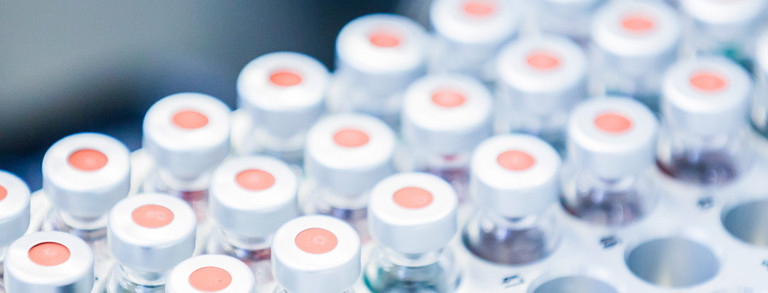Thermodynamic and Kinetic Stability of Amorphous Solid Dispersions (ASDs)
One of the biggest challenges in pharmaceutical development is the poor solubility of most active pharmaceutical ingredients (APIs) in the fluids of the gastrointestinal tract. A promising strategy to overcome this solubility limit is dissolving the API in a polymer matrix, generating a so-called amorphous solid dispersion (ASD) formulation. In this project, the influence of the preparation method and different storage conditions on the long-term stability of ASDs against API crystallization is investigated.
Description
90% of the newly developed APIs are poorly water-soluble leading to insufficient bioavailability. In ASD formulations, the API is embedded in a polymer matrix preventing crystallization of the API. The number of ASD formulations increases steadily. Most of those formulations are thermodynamically unstable (against crystallization of the API and amorphous-amorphous phase separation) and will thus change their morphology during storage. Only kinetic factors (storage at temperatures far below their glass-transition temperature) stabilize those ASDs at least for a certain time frame. [1, 2, 3]
While the thermodynamic stability of ASDs has already been investigated [2, 4], their kinetic stability is still poorly understood. In this project, the crystallization kinetics of ASDs and the influence of the manufacturing method and of storage conditions will be investigated to predict the shelf-life of ASDs.
References
| [1] | W.L. Chiou, S. Riegelman: "Pharmaceutical applications of solid dispersion systems" J. Pharm. Sci., vol. 60 pp. 1281–1302, 1971. |
| [2] | K. Lehmkemper, S.O. Kyeremateng, O. Heinzerling, M. Degenhardt, G. Sadowski: "Long-term physical stability of PVP-and PVPVA-amorphous solid dispersions" Molecular pharmaceutics, vol. 14(1) pp. 157–171, 2016. |
| [3] | C. Leuner, J. Dressman: "Improving drug solubility for oral delivery using solid dispersions" European Journal of Pharmaceutics and Biopharmaceutics, vol. 50(1) pp. 47–60, 2000. |
| [4] | A. Prudic, Y. Ji, C. Luebbert, G. Sadowski: "Influence of humidity on the phase behavior of API/polymer formulations" European Journal of Pharmaceutics and Biopharmaceutics, vol. 94 pp. 352–362, 2015. |







